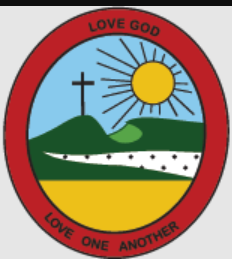Oz-e-English Writing
Unit 1 Narrative (Creative)
Free Starter Lessons
Unit Overviews
Australian Curriculum Content Descriptions
Unit 1: Narrative – Year 5 is an English language strand unit for Year 5 students.
It aligns to the Australian Curriculum: English Year Level Achievement Standards:
Literacy
- Demonstrate how ideas and points of view in texts are conveyed using vocabulary, including idiomatic expressions, objective and subjective language and how these can change as per the context (ACELY1698).
- Understand and describe common text elements and language practices employed in imaginative, educational and persuasive writings to achieve the text’s objectives (ACELY1701).
- Create and publish creative, persuasive and informative print and multimodal writings, selecting text structures, linguistic elements, images and sound that are appropriate for the purpose and audience (ACELY1704).
- Reread and revise student work using established standards for text structures and language elements (ACELY1705).
Language
- Have a clear understanding of how to use terminology to convey meaning more precisely and be aware that words can take on varied meanings depending on the context (ACELA1512).
- Be able to correctly spell novel words by using your understanding of existing words, base words, prefixes, suffixes, word origins, letter patterns and general rules of spelling (ACELA1513).
Literature
- Create literary texts that explore with structures, ideas and stylistic features of specific authors (ACELT1798).
Note: The content on this page is subject to change as this program is being updated to comply with Australian Curriculum version 9.0.
Learning Objectives
In Weeks 1-9, students:
- use the stimulus text to investigate the structure of narrative texts
- write narrative texts
- examine the format of a narrative using examples from literature with the theme of action
- learn how to recognise the crucial components of a narrative and apply this understanding to their own narrative writings
- create new texts together and follow the example texts’ building instructions
- use a hand-held camera as a metaphor to recognise the changing scenes that make up the narrative
- use the metaphor of a drone to recognise the changing scenes that comprise the narrative.
Assessment
Progress Tests
A total of four Progress Tests worth a combined 40 per cent of the final grade are conducted in Weeks 2, 4, 6 and 9. Progress Tests enable teachers to keep track of their students’ learning of the material covered and to pinpoint areas that require additional instruction. The Student Workbook contains Progress Tests.
End-of-Unit Assessment
In Week 7, the End-of-Unit Assessment is given, and it contributes 60 per cent to the total grade. Each unit’s success criterion is addressed by this assessment, which is part of the Student Workbook.
Australian Curriculum Content Descriptions
Unit 1: Narrative – Year 6 is an English language strand unit for Year 6 students.
It aligns to the Australian Curriculum: English Year Level Achievement Standards:
Literacy
- Plan, create, edit and publish written and multimodal texts whose purposes may be imaginative, informative and persuasive, using paragraphs, a variety of complex sentences, expanded verb groups, tense, topic-specific and vivid vocabulary, punctuation, spelling and visual features (AC9E6LY06).
- Use comprehension strategies such as visualising, predicting, connecting, summarising, monitoring and questioning to build literal and inferred meaning and to connect and compare content from a variety of sources (AC9E6LY05).
- Analyse how text structures and language features work together to meet the purpose of a text and engage and influence audiences (AC9E6LA03).
Note: this unit is currently under development.
Learning Objectives
In Weeks 1-9, students:
- identify the structure and elements of a narrative
- plan the elements of a narrative
- write a narrative.
Assessment
Progress Tests
A total of four Progress Tests worth a combined 40 per cent of the final grade are conducted in Weeks 2, 4, 6 and 9. Progress Tests enable teachers to keep track of their students’ learning of the material covered and to pinpoint areas that require additional instruction. The Student Workbook contains Progress Tests.
End-of-Unit Assessment
In Week 7, the End-of-Unit Assessment is given, and it contributes 60 per cent to the total grade. Each unit success criterion is addressed by this assessment, which is part of the Student Workbook.
Other Units
- Unit 2 Persuasive (Civics)
- Unit 3 Informative (Economics and Business)
- Unit 4 Informative (Geography)
- Unit 5 Recount (History)
Lesson Design
Lesson Objective
Success Criteria
Activating Prior Knowledge
I Do
We Do
Apple Question
You Do
Revise



